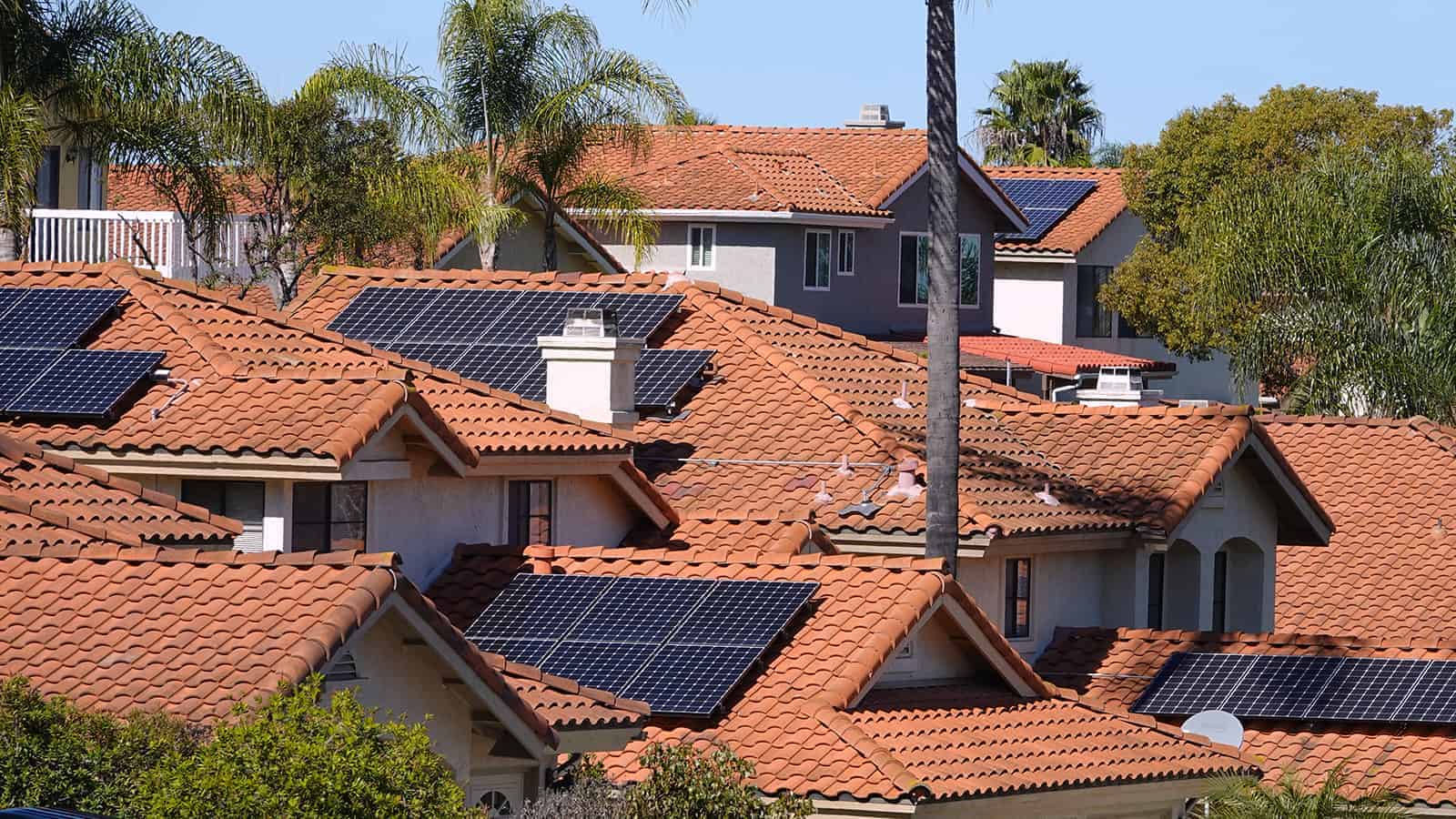A team of international scientists found that rooftop solar panels could power a quarter to half of the world by 2050. The study marks the first comprehensive global assessment of the potential energy production of rooftop solar photovoltaics (RTSPV) technology.
Researchers from MaREI, the SFI Research Centre for Energy, Climate and Marine in University College Cork (UCC), collaborated on the study. Other international research partners contributed as well. The findings have been published in the journal Nature Communications.
Solar energy remains the fastest growing sustainable energy sector because of improvements in installation capabilities and reduced costs. Private residences, commercial and industrial buildings have all invested in rooftop solar panels. Researchers estimate that sun-powered panels will provide 25-49% of the world’s energy needs by mid-century. Despite these predictions, researchers have struggled to assess the costs and electricity generation of solar panels accurately.
To provide better assessments, the international research team tackled the problem head-on. The research team included lead author Siddharth Joshi and UCC colleagues Professor Brian Ó Gallachóir and Dr. Paul Holloway. Colleagues at Imperial College London, Columbia University, and Ahmedabad University also helped with the study.
Rooftop Solar Panels May Help Climate Change, According to Science
The authors mapped 130 million km2 of the global land surface for the research using a revolutionary Machine Learning algorithm. With this technology, they identified 0.2 million km2 of rooftop area, which they analyzed to estimate the potential energy generation of RTSPV.Their analysis revealed that rooftop solar panels could provide a potential of 27 petawatt-hours per year globally. This investment would cost around $40-280 per megawatt-hour, with the most significant energy production potential in Asia, North America, and Europe. Additionally, they noted that generating clean energy from RTSPV would cost the least in India (US$66 per megawatt-hour) and China (US$68 per megawatt-hour). On the other hand, the UK and US remain the most expensive countries for deploying rooftop solar panels on a large scale.
Currently, rooftop solar panels comprise nearly 40% of global solar photovoltaics. They account for 25% of the total renewable energy additions in 2018, eclipsing the combined new installed capacities of coal and nuclear. With that in mind, it would also be wise to learn the different types of roof and roofing materials through experts like Carolina Home Specialists if you want to lower your home-building cost while ensuring energy efficiency. Visit sites like bondocroofing.com to learn more.
Since the late 1950s, rooftop solar panels and other solar installations have exploded in popularity. Between 2006 and 2018, the energy generation of RTSPV expanded from 2.5 GW to 213 GW- an 85-fold increase globally. In this same timeframe, installation costs of RTSPV technology have declined dramatically. From 2010 to 2019, solar energy prices decreased by between 42 and 79%, now ranging from $63 to and 265MWh.
Dr. Shivika Mittal, the Research Associate in Energy and Integrated Assessment Model at the Grantham Institute at Imperial College London, said:
“The cost of generating electricity from solar rooftop panels has declined significantly in the last decade. Our new data set will help governments or organizations, business owners to identify solar power hot-spots where they can mobilize new investment, and this would help in accelerating the adoption of solar power.”
As the world weans itself off fossil fuels and turns to clean energy, we have a chance to beat climate change. Researchers estimate that solar PV installation will add 15 million jobs to the global economy between 2018 and 2050. However, the potential of rooftop solar panels will largely depend on international development and the cost of storage moving forward.
Individual Homeowners Can Help Create a More Sustainable World
Many people feel that they have no power to make changes in the world. However, this study proves that individuals can help the world transition to a future powered by clean energy. Rooftop solar panels could provide every homeowner across the globe with sustainable electricity. Not only would this help with climate change mitigation, but it also saves money in the long run.
Co-author Prof. Brian Ó Gallachóir said: “This potential of 27 PWh per annum from rooftop solar is very significant. For comparison, our total electricity use in all homes around the world was 6 PWh in 2019. These results are very timely in the context of the global climate change conference in the UK next month. Rooftop solar PV not only helps to reduce emissions but also to involve homeowners directly in the energy transition.”
Of course, most of the energy generation potential lies in heavily populated areas in Asia, Europe, and North America. However, rural populations have a dire need for any form of electricity; in 2018, 800 million people globally lived in darkness. Researchers say that their findings have important implications for mitigating climate change using rooftop solar panels. Hopefully, every citizen will have clean energy powering their homes soon.
Senior author Dr. James Glynn commented,
“The open data generated in this research helps to quantify, locate and prioritize investment in zero-carbon electricity systems. By mapping the solar PV rooftop potential in high resolution globally, development banks and energy agencies in developing countries are better informed as to the technology’s role in enabling sustainable development towards climate action and affordable and clean energy.”
“For the first time, we can analyze the spatial and temporal characteristics of global rooftop photovoltaics with improved accuracy using a combination of big data, machine learning, and GIS. This study can aid in improved representation of rooftop solar photovoltaics in global energy systems,” said UCC researcher Siddharth Joshi.
Final Thoughts on How Rooftop Solar Panels Could Provide Power to Half the World by 2050
Across the world, rooftop solar panels and other sun-powered technologies have been gaining steam. Decades ago, solar power cost an excessive amount. Because of that cost, only large corporations and organizations installed it. However, solar panels have never been cheaper to install. In fact, around 40% of homes and businesses now have them. A study found that by 2050, solar panels could potentially provide a quarter to half the world’s energy demands.
So, don’t let the negative climate change news bring you down. In fact, governments, businesses, and homeowners alike have all been working toward a carbon-free future. We have monumental work ahead of us, but rooftop solar panels have already made an enormous difference. If you’re thinking about installing solar panels, check out Palmetto Roofing and Solar.
















 Community
Community

